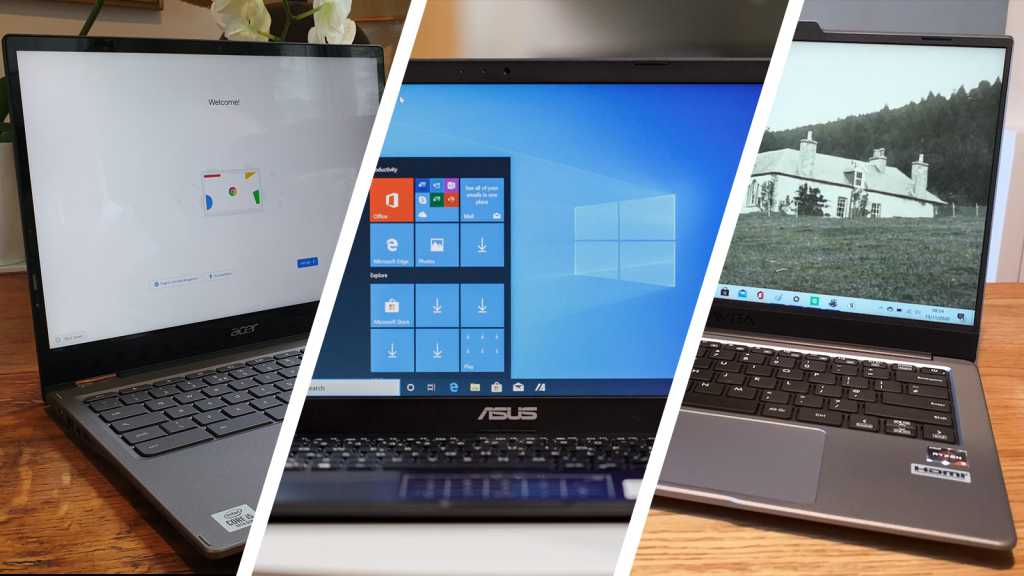Picking up a brand new laptop can be a stressful experience. How much storage will I need? Which hardware is the best for my budget? The sight of the alphabet soup model numbers are enough to set your heart racing. If you’re not sure where to begin, don’t worry, you’ve come to the right place. Whether you’re looking for a lightning fast gaming laptop, a Chromebook, or a lightweight 2-in-1 for office work, we’ve tested hundreds of laptops to identify the best option no matter what you need.
Why you should trust us: It’s in our name. PCWorld prides itself on laptop experience and expertise. We’ve been covering PCs since 1983, and we now review more than 70 laptops every year. All of the picks below have been personally tested and vetted by our experts, who’ve applied not only performance benchmarks but rigorous usability standards. We’re also committed to reviewing PC laptops at every price point to help you find a machine that matches your budget.
Looking for sweet discounts? Check out our regularly updated roundup of the best laptop deals available right now.
Updated June 26, 2024: We replaced the Best Midrange Laptop with the 2024 version of the Dell Inspiron 16 Plus ($1,499) and added the Microsoft Surface 7 ($999.99) as the Best Battery Life pick, as well as the Lenovo Yoga Pro 9i ($1,699.99) as an alternative option underneath the Best Overall pick. We’ve also updated our list of recent laptop reviews, so be sure to check those out near the bottom of the page.
The best laptops we’ve tested
Dell Inspiron 14 Plus (2024) – Best overall
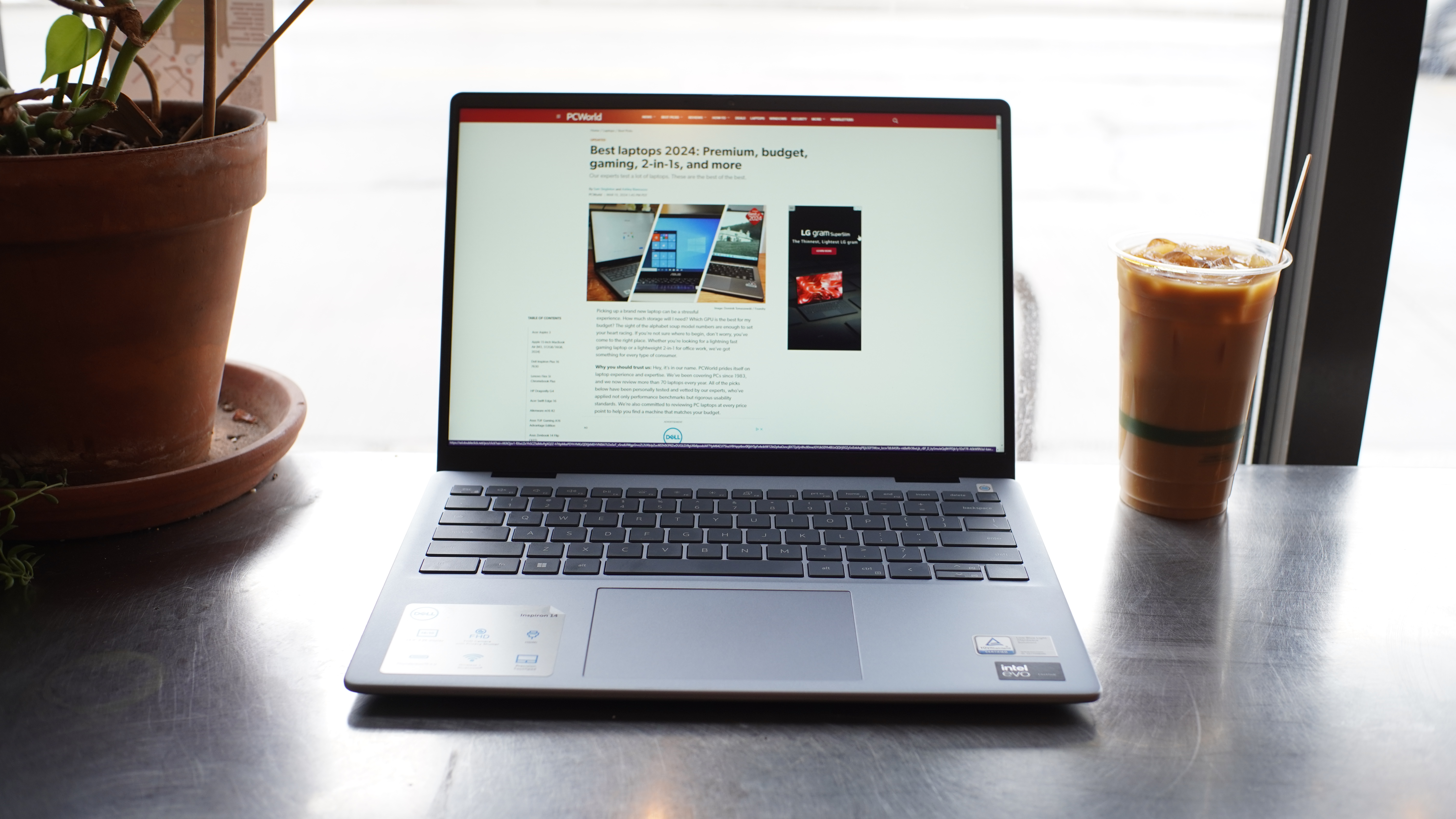
Pros
- Strong performance
- Exceptional battery life
- Wonderful typing experience
Cons
- CPU throttles under heavy loads
- No user upgrades
Why we like the Dell Inspiron 14 Plus
The Dell Inspiron 14 Plus is one of the most well-rounded laptops money can buy. It offers strong performance, exceptional battery life, and a vibrant display. The best part is that it costs about $1,000, which is a reasonable price point considering the price to performance ratio. In fact, it performed exceptionally in PCMark 10’s benchmark, according to our review. With a PCMark 10 score of 7,061, it beat out the Acer Swift Go 14, which has similar specs to the Dell, and the more expensive Lenovo ThinkPad X1 Carbon. The Inspiron 14 Plus also lasted an impressive 17 hours on a single charge, which is definitely more than a full workday or school day. You don’t have to worry about finding a wall outlet to charge up.
Who should buy the Dell Inspiron 14 Plus
Anyone looking for a really good, well-rounded laptop. In addition to the impressive performance and battery life, it also has a lovely 14-inch 1400p display. According to our review, “the display is exceedingly well suited to office work and static imagery.” It has a peak brightness level of a stunning 418 nits as well as an anti-glare coating, which means you can use this laptop in different lighting environments. It may not have the prettiest design we’ve ever seen, but its hardware capabilities and astoundingly long battery life make up for the blah aesthetics.
Alternative option: If you’re willing to spend a little more, the Lenovo Yoga Pro 9i ($1,699.99) is another great option to consider. It has a more powerful processor (Intel Core Ultra 9 185H), more RAM (32GB), and a higher resolution display (3200×2000). The keyboard is absolutely killer, too. It’s a fantastic high-end laptop.
Asus Zenbook 14 OLED – Best overall runner-up
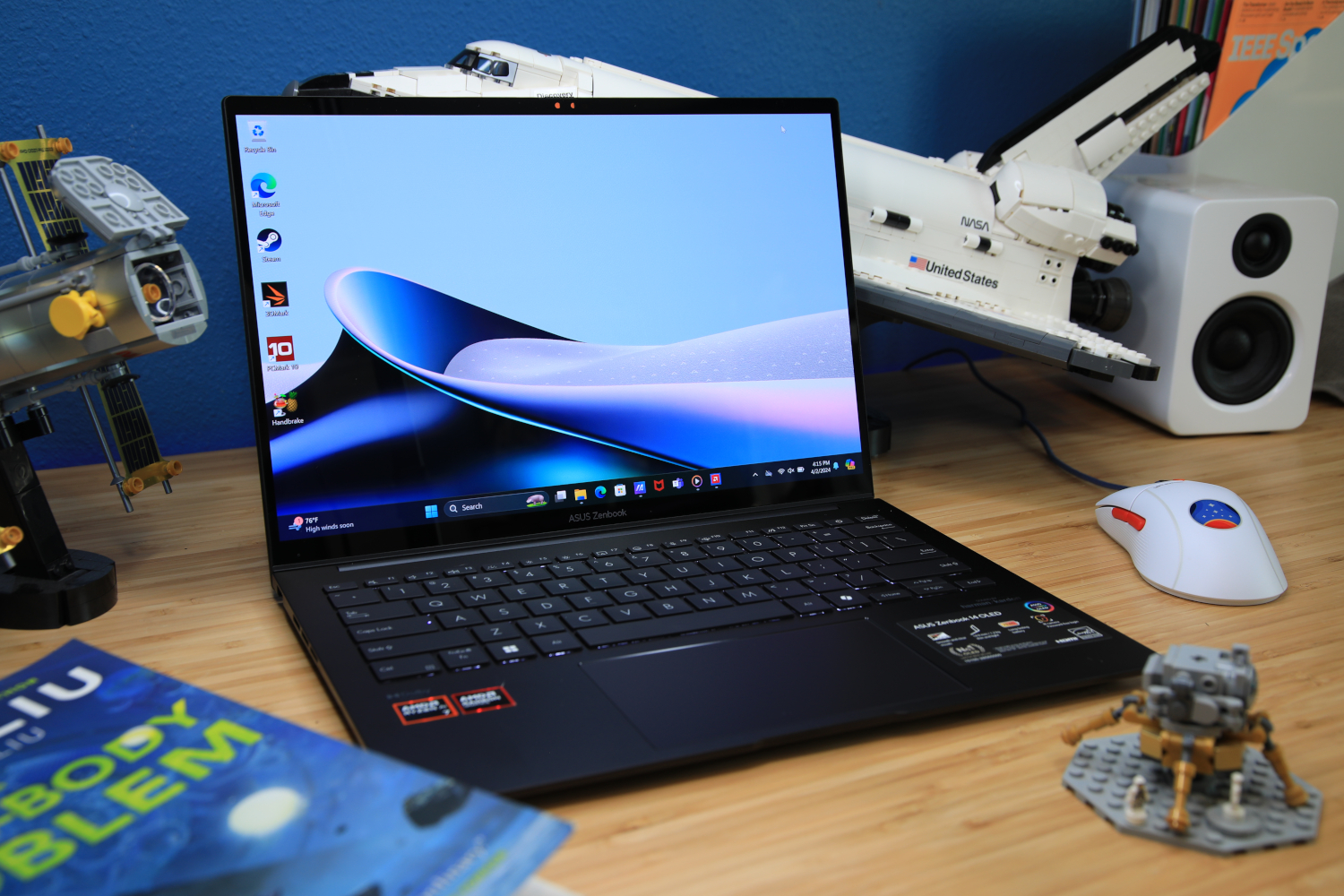
Pros
- Robust build quality
- Attractive OLED touchscreen
- Good CPU and integrated GPU performance
- Outstanding battery life
Cons
- Blah design
- Keyboard isn't memorable
- Mediocre connectivity options
Why we like the Asus Zenbook 14 OLED
The Asus Zenbook 14 OLED wowed us with its zippy CPU performance, phenomenal battery life, and attractive OLED touchscreen display. According to our review, “movies and games look realistic and vibrant” on the 1200p OLED touchscreen, although it can be difficult to use in bright environments due to the reflective surface. It also lasted 16 hours on a single charge, which is absolutely wild! That result really trumps otherwise excellent competitors like the Lenovo Slim 7 14 Gen 9 and the HP Pavilion Plus Laptop 14. As for performance, the Asus Zenbook 14 OLED absolutely crushed the PCMark 10 benchmark with an impressive score of 6,772. That means it’s very fast and responsive during real-world tasks like web browsing, video conferencing, and so on.
Who should buy the Asus Zenbook 14 OLED
Anyone looking for a powerful, affordable laptop with an OLED display! It’s so much more than its OLED screen, though. The build quality is quite good and day-to-day performance is zippy. Plus, you won’t have to go looking for an outlet often thanks to the long battery life. Connectivity options are a bit limited, but that’s not unusual for a laptop in this price range. Overall, it’s a great Windows machine that hits all the right marks.
Acer Aspire 3 – Best budget laptop
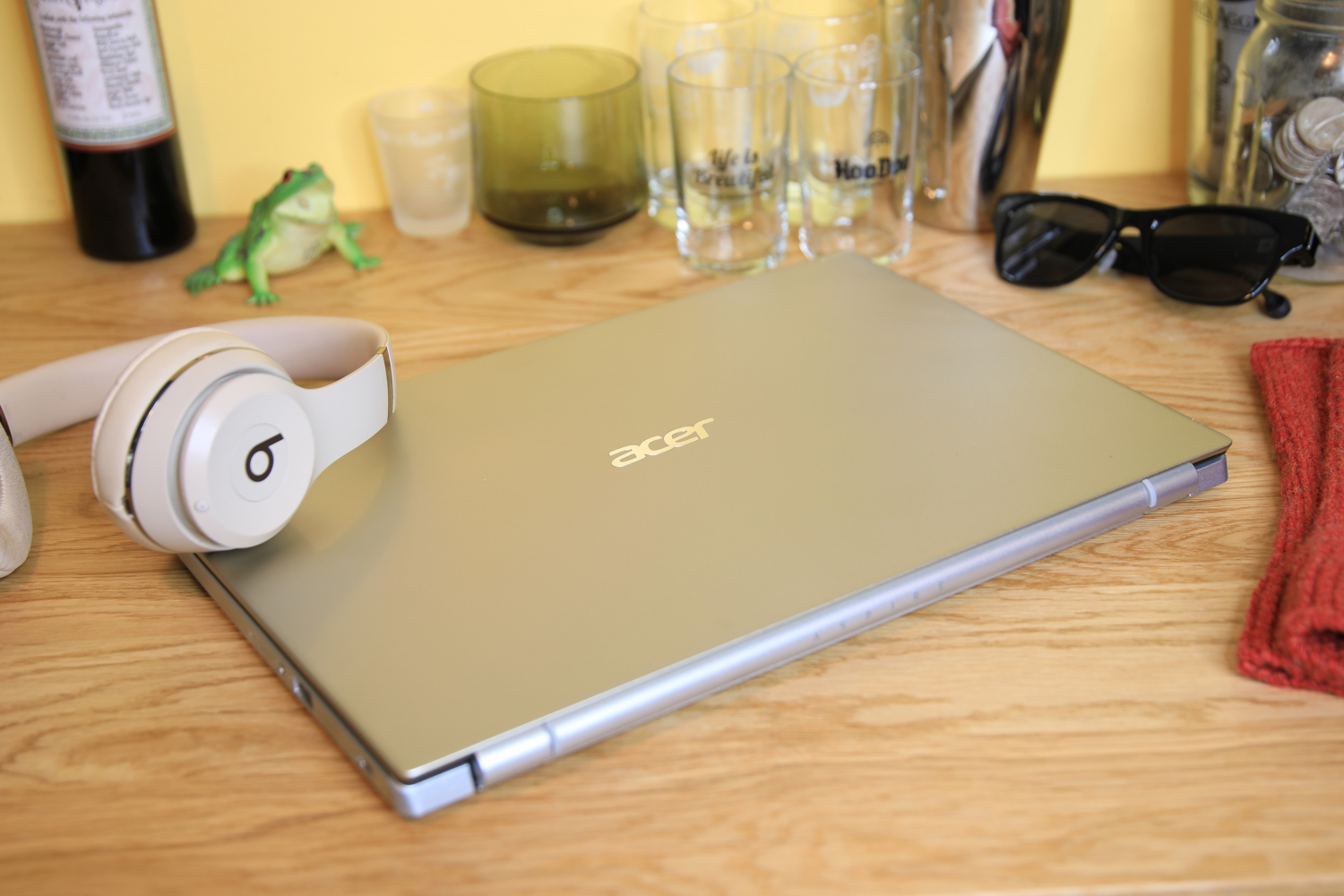
Pros
- Reliable performance
- 1080p display
- HD webcam
- Solid build
Cons
- Speakers sound tinny when playing music
- A little heavy
Why we like the Acer Aspire 3
The Acer Aspire 3 laptop offers both reliable performance and a rugged build at an imminently affordable price. It’s fast enough for everyday tasks like checking e-mail, watching Netflix, and browsing the web. You’re also getting a full-sized keyboard as well as a 1080p screen. The Aspire 3 also blew the competition out of the water with a Cinebench R15 score of 1,925, beating out the Acer Aspire Vero 14, which has similar hardware. Cinebench is designed to run all of the cores of a laptop’s CPU and determine how well a laptop handles processor-intensive multi-threaded workloads.
Who should buy the Acer Aspire 3
Anyone who’s on a restricted budget! To get more specific, we feel as though the Acer Aspire 3 is a good option for students and remote workers. It’s inexpensive and the HD webcam produces “clean, crisp video” according to our review, which means you’ll always look your best in videoconferencing calls. It also delivers strong performance for the price.
Alternative option: If you absolutely cannot spend $330 for the Acer Aspire 3, then you should check out the Acer Aspire Go 15–it’s about $30 cheaper and has better battery life (12 hours!).
Microsoft Surface Laptop 7 – Best battery life
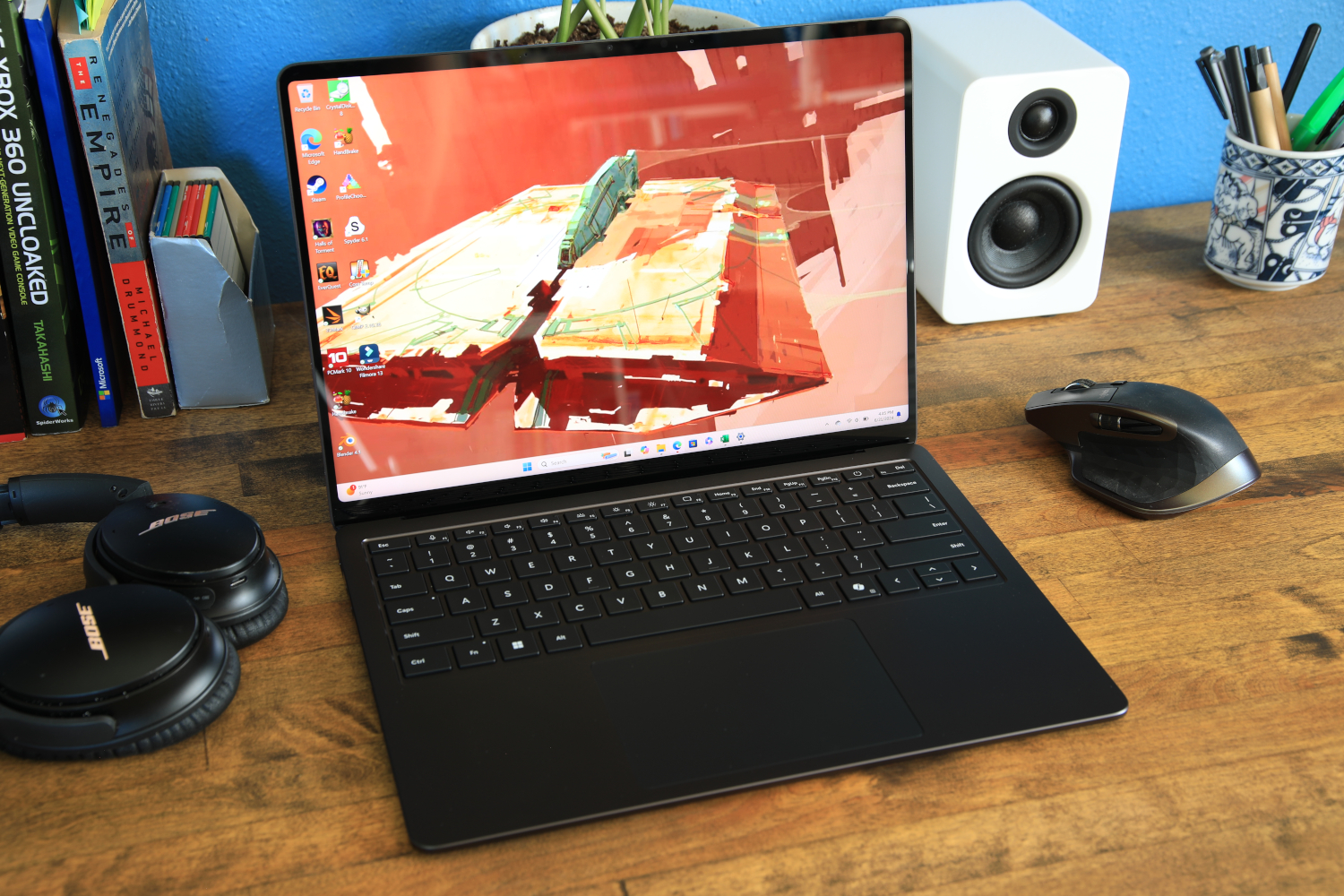
Pros
- Attractive, slim, and light
- Class-leading battery life
- Excellent wireless connectivity via Wi-Fi 7
- Good performance in real-world situations
Cons
- Vague keyboard falls short of competitors
- IPS touchscreen's image quality can't compare to OLED
- Gaming performance doesn't hold up
Why we like the Microsoft Surface Laptop 7
The Microsoft Surface Laptop 7 with the new Qualcomm Snapdragon X Elite is finally here and ready to party. And boy, can it party. While we love its lightweight form factor and phenomenal wireless connectivity, you just can’t beat the 20-hour battery life. Given that the Surface Laptop 7 is packing a mere 54 watt-hour battery, that result is even more impressive. According to our review, we believe it’s a “significant threat to alternatives with AMD and Intel hardware.” You better watch your back, competitors.
Who should buy the Microsoft Surface Laptop 7
Anyone that needs a long-lasting laptop. It’s a great option for frequent travelers or those who just don’t want to worry about battery life. Although Qualcomm’s chip isn’t ideal for gaming, it’s fantastic for battery life and it performs very well in day to day tasks – a big departure from previous laptops with older Qualcomm chips inside. Those struggled mightily with software compatibility; the vast majority of programs just work, and well, on the Surface Laptop 7.
Dell Inspiron Plus 16 – Best midrange laptop
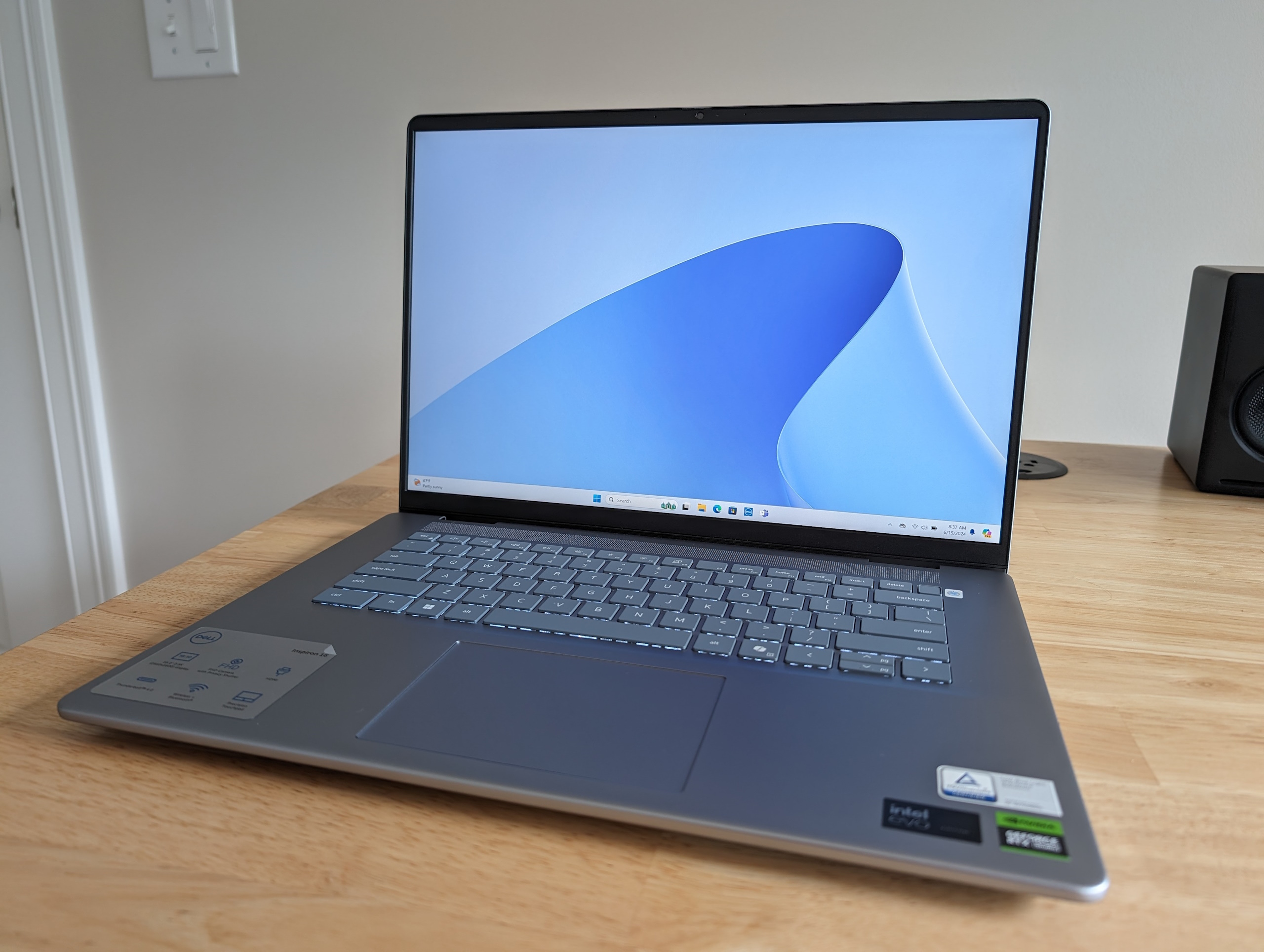
Pros
- Excellent performance
- Good cooling avoids thermal throttling
- Long battery life
Cons
- Only one USB-C port, which is also used for charging
- No facial recognition (only fingerprint)
- Won't get Copilot+ PC features
Why we like this Dell Inspiron Plus 16
The Dell Inspiron Plus 16 brings a lot to the table: strong performance, long battery life, and top-notch build quality. Loaded with an Intel Core Ultra 7 155H CPU and an Nvidia GeForce RTX 4060 GPU, this machine turned in a fantastic PCMark 10 score of 7,101, so it should have no problem chewing right through general web browsing as well as office work, while the powerful discrete GPU aids with creative tasks. The real star of the show is the battery life, though. We managed to get 17 hours out of the enormous 90 watt-hour battery on a single charge. It’s a phenomenal result for a 16-inch laptop.
Who should buy the Dell Inspiron Plus 16
Anyone that needs more power than what your typical, day-to-day laptop offers. It’s powerful enough for more demanding applications and you can keep going and going thanks to the 17 hour battery life. If you’re looking to save a bit of money, the 2023 version of the Dell Inspiron 16 Plus ($1,249.99) is still a good option. While it gets a touch toasty under heavier loads, performance is reliable and it can pull double duty running games, if that’s your bag.
Lenovo Flex 5i Chromebook Plus – Best Chromebook
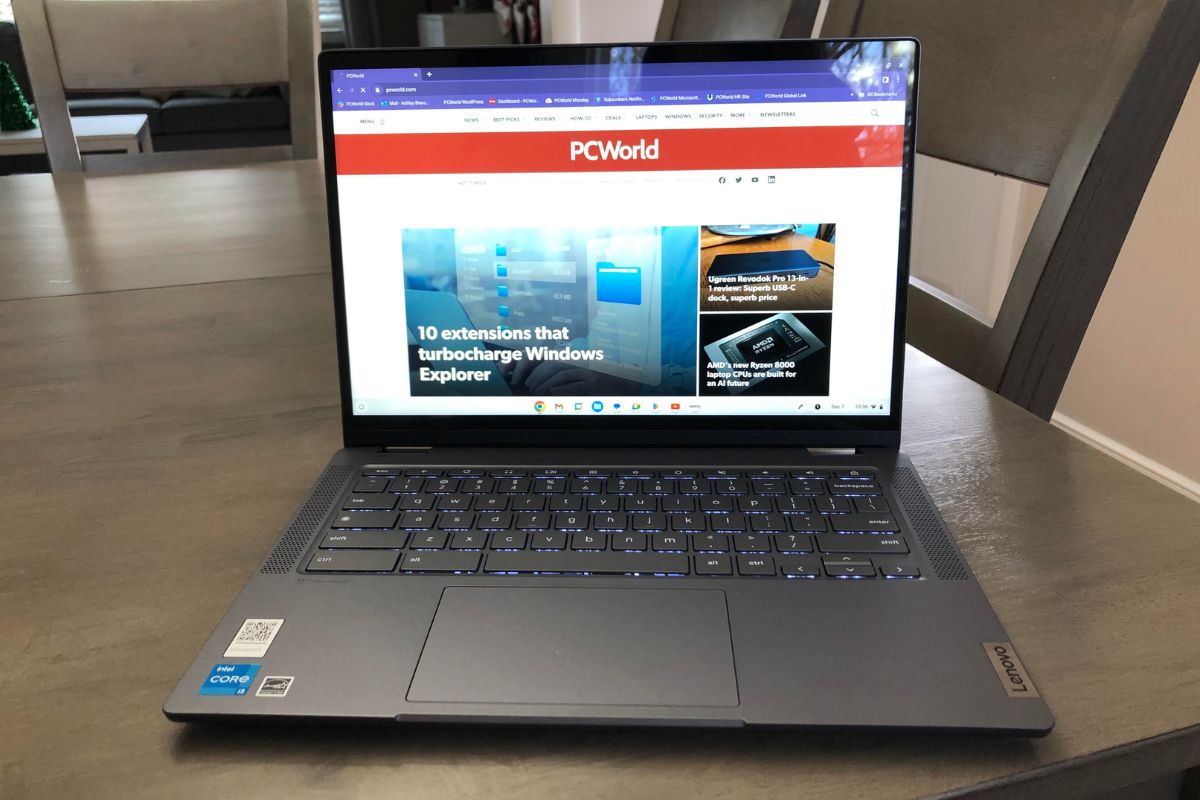
Pros
- Snappy day-to-day performance
- Versatile 2-in-1 design
- Good typing experience
Cons
- Stylus not included
- Heavier than expected
Why we like the Lenovo Flex 5i Chromebook Plus
From the convertible design to the beautiful touchscreen, the Lenovo Flex 5i Chromebook Plus has a lot to offer, especially for under $500. The 2-in-1 design allows you to swing the screen around and use the laptop like a tablet, upping the versatility factor. You can also expect snappy day-to-day performance as well as lightning fast boot-up times.
Who should buy the Lenovo Flex 5i Chromebook Plus
If you’re looking to pick up a premium Chromebook for work or personal use, then the Lenovo Flex 5i Chromebook Plus is a fine choice. While the $499 price tag is very much in the high end when it comes to Chromebooks, we feel the overall fit, finish, and firepower make it worth the extra cash.
Alternative option: If you’re looking for a cheaper Chromebook with a bigger screen, the Acer Chromebook Plus 516 GE ($699.99) is a great option. The display measures 16 inches and it has a 2560×1600 resolution as well as a 120Hz refresh rate. According to our review, the “120Hz display is excellent and gives the laptop an edge if you’d plan to play games on a cloud gaming service that supports high refresh rates like Nvidia’s GeForce Now.” The only downside is that it’s a bit expensive for a Chromebook.
MacBook Air (M3) – Best MacBook
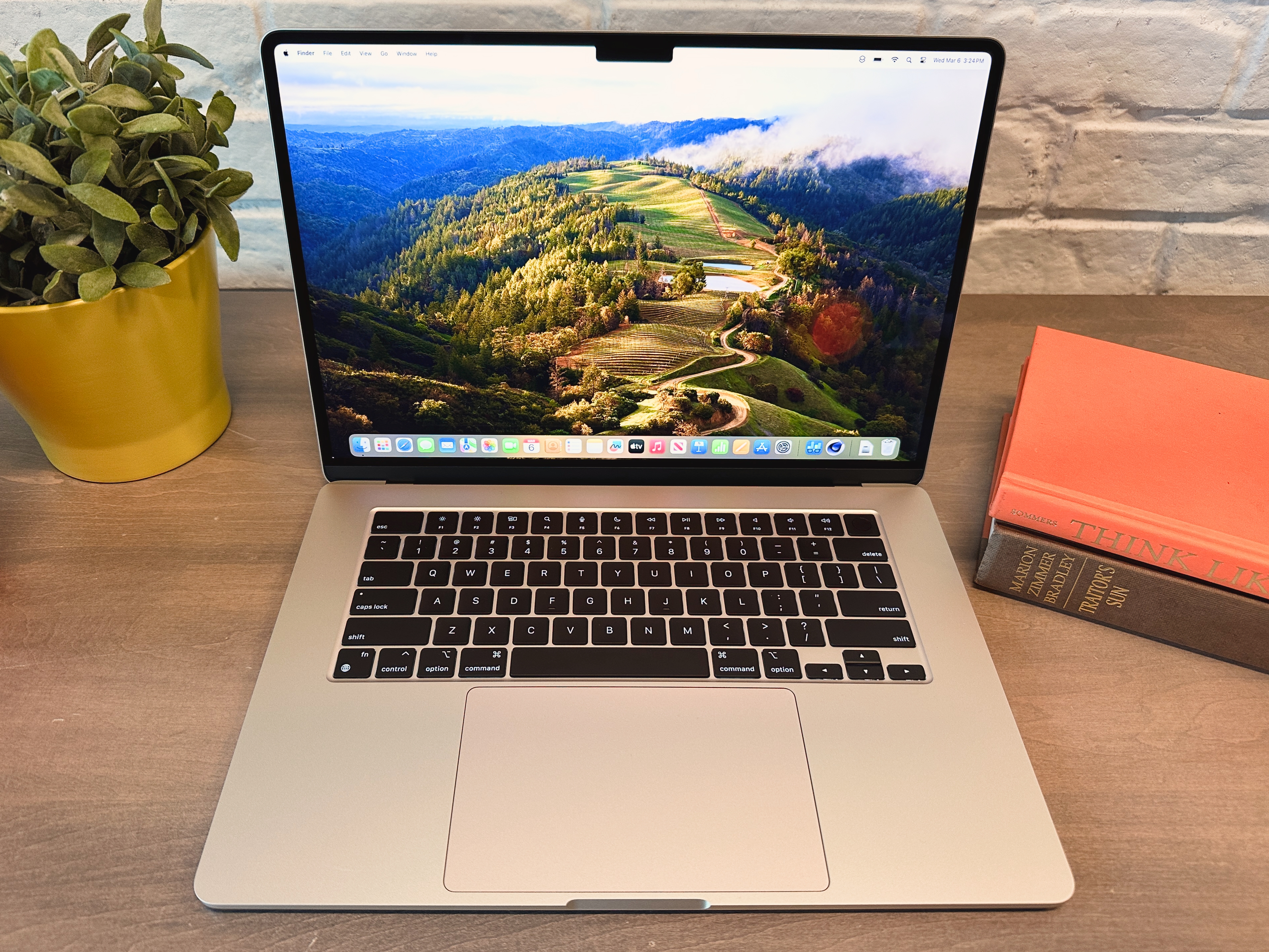
Pros
- Excellent battery life
- Great combination of price, features, and performance
- 256GB SSD is now two NAND chips, maintaining performance
Cons
- Expensive memory upgrades
- Dual external display support requires closed lid
Why we like the MacBook Air (M3)
The MacBook Air (M3) has a lot to offer for the $1,299 price. In fact, it received high marks across the board thanks to the 8-core CPU (M3) and the 10-core GPU. It’s capable of chewing through office work as well as casual use tasks. While performance is comparable to the MacBook Pro (M3), there is one difference: the fans or lack thereof. The MacBook Air doesn’t have any fans, which results in quieter operation before heavy-duty tasks will likely put more pressure on the chip. That said, battery life is the real star of the show here. The MacBook Air (M3) breathed its last breath at the 19 hour mark, which is perfect for those with busy schedules.
Who should buy the MacBook Air (M3)
Anyone who prefers MacOS over competing operating systems. Battery life is outstanding and the laptop itself is both slim and light, weighing in at just over three pounds. The 15-inch Liquid Retina (LED) screen might be considered a step-down from the MacBook Pro’s Liquid Retina XDR (mini-LED) display, but that doesn’t mean it’s a poor screen. It still looks fantastic for day-to-day use. The $1,299 price tag is also reasonable for the performance and features you’re getting.
Read our full MacBook Air (M3) review
Alienware m16 R2 – Best gaming laptop
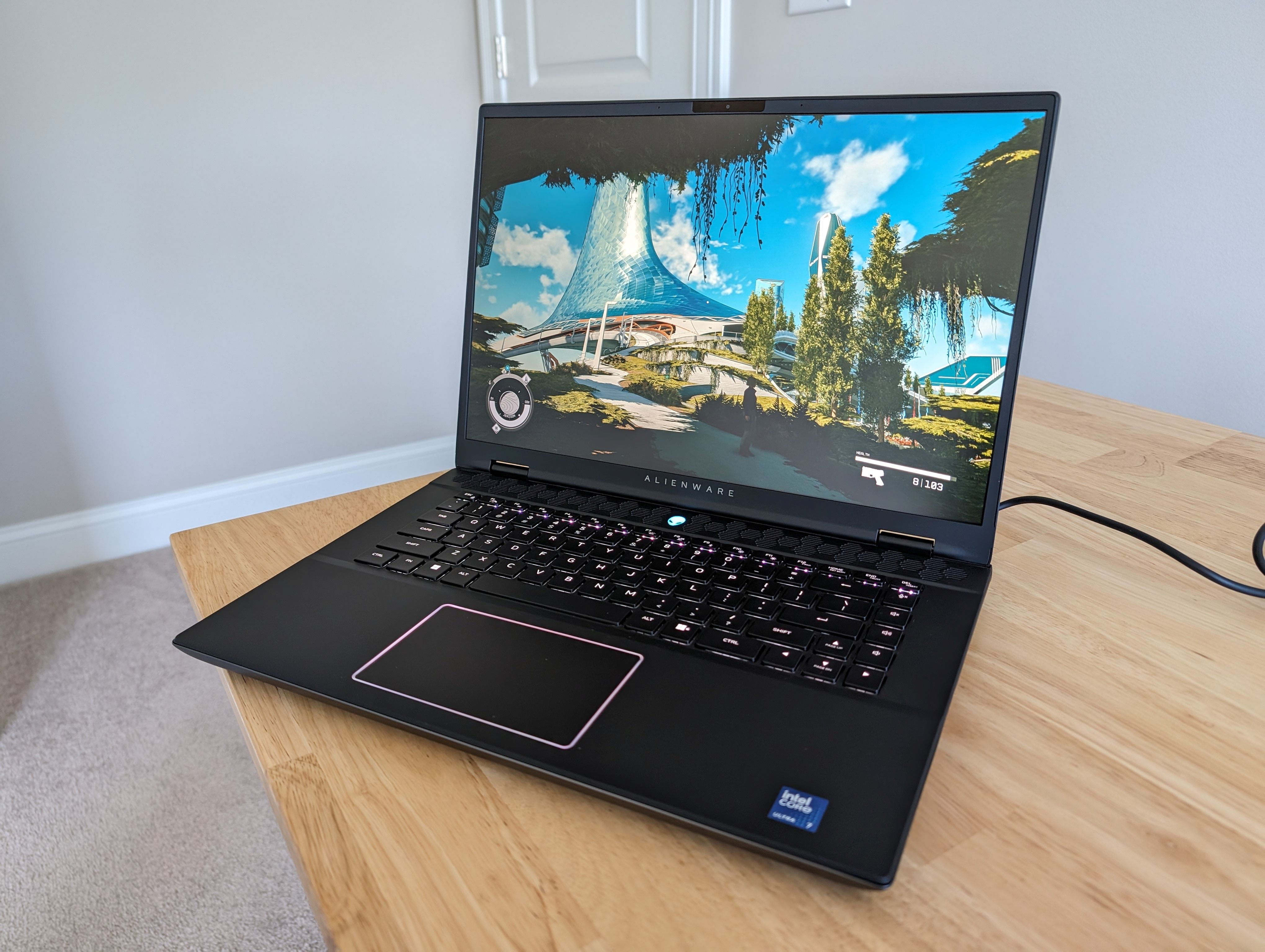
Pros
- Solid gaming performance
- Rugged build quality
- Good battery life
Cons
- Display is dimmer than we like
Why we like the Alienware m16 R2
The Alienware m16 R2 delivers strong graphics performance and good battery life. This specific model comes loaded with an Intel Core Ultra 7 155H CPU and an Nvidia GeForce RTX 4070 GPU, which is nothing to sneeze at. It lasted a respectable 11 hours and fifteen minutes on a single charge and it averaged 144 frames-per-second when running the Shadow of the Tomb Raider benchmark. According to our review, it’s only “four frames-per-second slower than the Razer Blade 16,” which has an RTX 4090 GPU and a price tag of over $3,000.
Who should buy the Alienware m16 R2
Anyone looking for a great gaming laptop. You’re getting strong graphics performance as well as long battery life, which is unusual for a gaming laptop, as most tend to die around the six hour mark. The 16-inch IPS display also has a resolution of 2560×1600 and a refresh rate of 240Hz, so gameplay should be nice and smooth. The picture quality is good, but it’s not an OLED panel. While it may not be the brightest or most color rich display we’ve ever seen, it’s perfectly fine for gaming. Besides, you can always plug into an external monitor if need be.
Alternative option: If you’re looking for a more lightweight option, you should definitely check out the $1,599 Asus ROG Zephyrus G14. It weighs just 3.31 pounds, which means you can easily take it anywhere with you. That said, it didn’t make the cut because of ho-hum battery life. Plus, the Alienware m16 R2’s RTX 4070 GPU is more powerful than the Asus ROG Zephyrus G14’s RTX 4060 GPU. Alternatively, if you’re looking for even more firepower, the ROG Zephyrus G16 is a killer OLED-equipped laptop with RTX 4070, 4080, and 4090 options available.
Asus TUF Gaming A16 Advantage Edition – Best budget gaming laptop
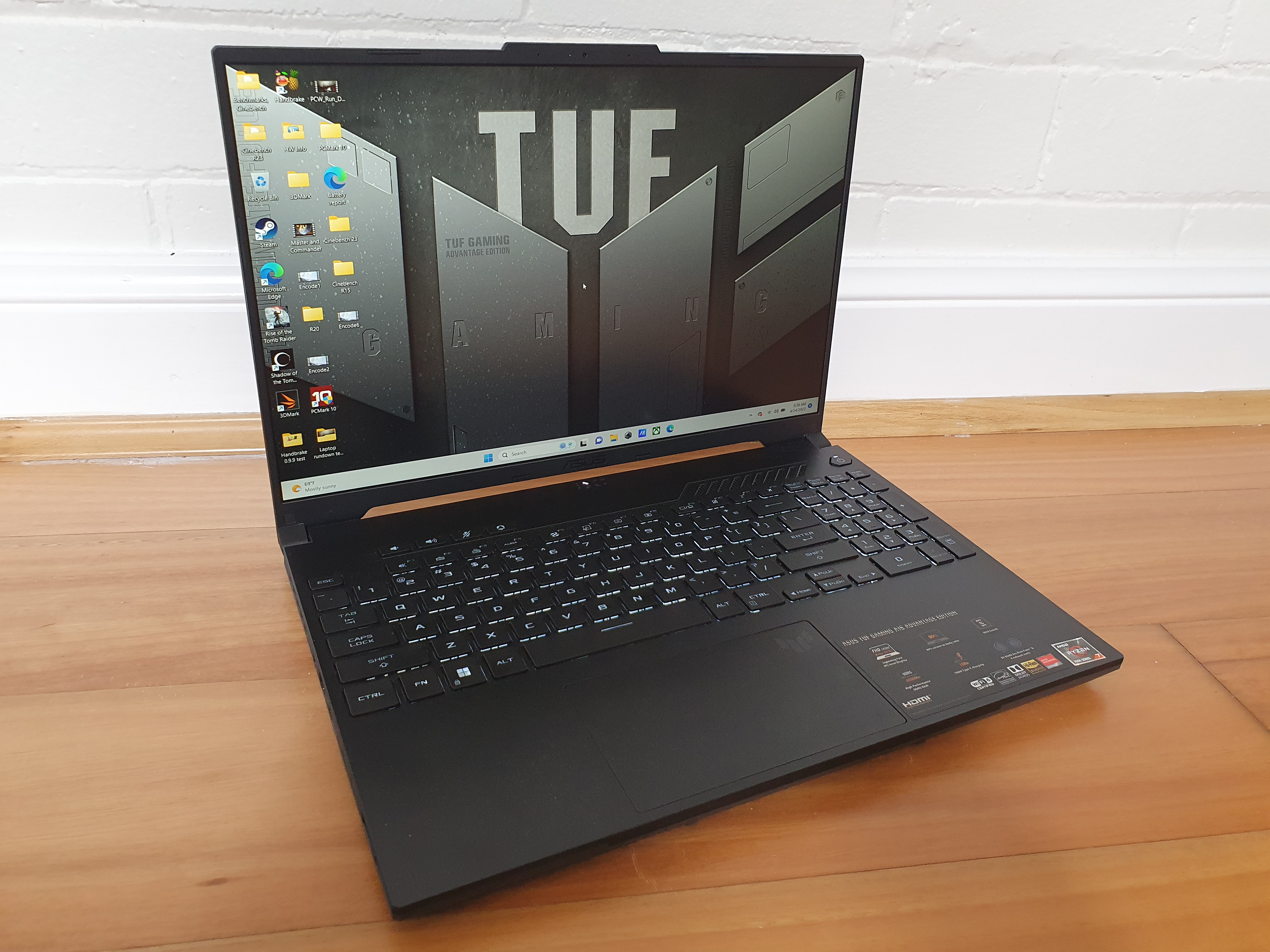
Pros
- Impressive all-day battery life
- Gorgeous 16:10 display
- Rugged chassis
Cons
- Keys feel a bit soft
- 720p webcam leaves little to be desired
Why we like the Asus TUF Gaming A16
The Asus TUF Gaming A16 Advantage Edition is something of a unicorn and I mean that in the best way possible. This specific machine exhibits strong graphics performance as well as long battery life. Long battery life? A gaming laptop? How preposterous. Well, not anymore! The Asus TUF managed an incredible 11 and a half hours on a single charge. Also, thanks to the Nvidia GeForce RTX 4050 GPU, the laptop achieved 123 frames-per-second in the Rise of the Tomb Raider benchmark. That’s impressive, especially for a sub-$1,000 gaming machine.
Who should buy the Asus TUF Gaming A16
The Asus TUF Gaming A16 Advantage Edition is a good option for those on a tight budget. For under a grand, you’re getting reliable graphics performance, a spacious keyboard, and long battery life. It also works as a good general purpose machine. With a Cinebench R20 score of 589, it should have “no trouble running lightweight apps and programs,” according to our review.
Alternative option: The $1,000 Lenovo LOQ 15 stands as another solid budget option. It’s more than capable of 1080p gaming and the design is very sci-fi inspired. It didn’t nab the top pick because of the poor battery life (not unusual for a gaming laptop) and limited ports, but if you’re looking for more raw GPU horsepower, its RTX 4060 is a step above the RTX 4050 included in the Asus TUF.
Acer Chromebook 516 GE – Best gaming Chromebook

Pros
- Rigid build
- Fantastic CPU performance
- Plenty of wired and wireless connectivity
- High resolution 1600p display
Cons
- Disappointing speakers and microphone
- Display falls behind in contrast, color vibrancy
- Mediocre keyboard and touchpad
Why we like the Acer Chromebook 516 GE
The Acer Chromebook 516 GE wins a lot of brownie points because it’s a reliable performer thanks to the Intel Core i5-1240P CPU and the 16-inch 1600p display’s fast 120Hz refresh rate. Compared to some Windows laptops, it’s reasonably priced as well. Not only does it fly through everyday tasks with ease, but it’s also a great machine for cloud gaming. As long as you’ve got a stable Internet connection and currently belong to a streaming service (Nvidia GeForce Now, Amazon Luna, etc), you’ll blitz right through most triple-A games. In fact, according to our review, “gameplay felt perfectly smooth” and “Nvidia’s GeForce Now diagnostics panel flagged no problems.”
Who should buy the Acer Chromebook 516 GE
Anyone that wants to give cloud gaming a whirl or just a dependable machine for day-to-day use–the Acer Chromebook 516 GE can pull double duty in that regard. In addition to the smooth cloud gaming performance, it also features a wide array of connectivity options: two USB-C 3.2 Gen 2, one HDMI, one Ethernet (wired connectivity is especially useful for cloud gaming), and one 3.5mm combo audio. Other goodies include a 1080p webcam, a 65 watt-hour battery, and a rugged design.
Samsung Galaxy Book4 Ultra – Best content creation laptop
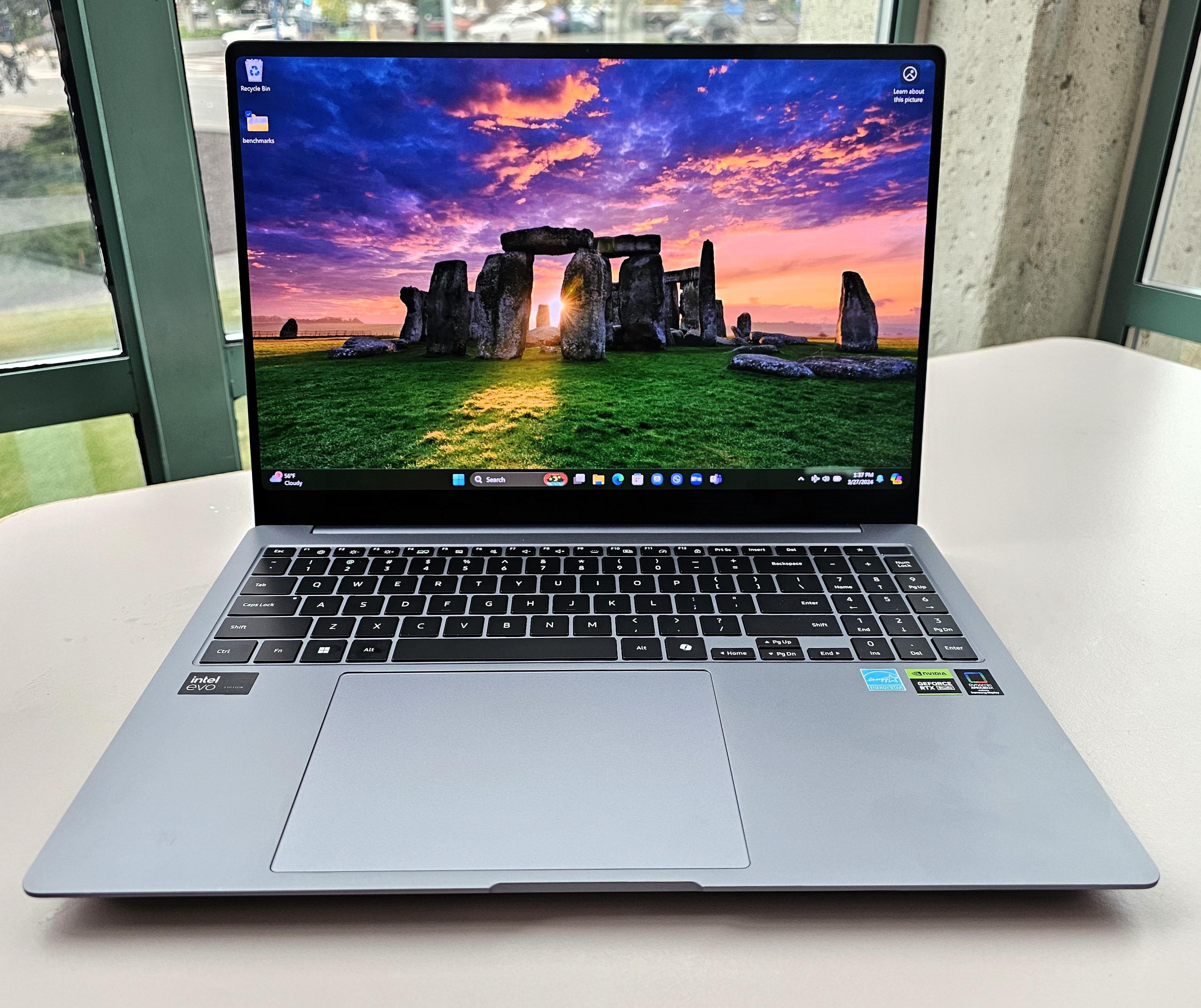
Pros
- Phenomenal battery life
- Solid GPU performance
- Gorgeous OLED screen
- Good audio
Cons
- Not a great keyboard
- Chargers keep getting bigger
Why we like the Samsung Galaxy Book4 Ultra
The Samsung Galaxy Book4 Ultra is the perfect laptop for content creation. The Nvidia GeForce RTX 4070 GPU will give you the extra boost you’ll need for intensive video or photo editing tasks and the 16-inch 1800p OLED touch display is sharp enough to get those little details just right. Plus, it comes with 1TB of SSD storage (you’ll need a good amount of space for your images and videos) and a microSD for easy offloading of photos. Battery life is top-notch, too. It lasted a total of 18 hours on a single charge, which is downright impressive. That said, if you’re editing a lot of photos with the brightness turned all the way up, you may see a shorter result.
Who should buy the Samsung Galaxy Book4 Ultra
The Samsung Galaxy Book4 Ultra is a great laptop for content creators because of the powerful hardware (discrete graphics are a must!) and stunning OLED screen. It also has a diverse array of ports such as Thunderbolt 4, USB Type-A, HDMI 2.1, microSD, and headphone/mic. Although its OLED screen is high-resolution, it’s not 4K, so consider the similarly spec’d Dell XPS 17 below if editing 4K video is crucial to your workflow. Other cool features include a 1080p webcam, a fingerprint reader, and a lovely Moonstone Gray color scheme.
Alternative option: The Dell XPS 17 9730, with its powerful internal components and massive 17-inch 4K display, is still a good option for content creators. While we like the thin chassis and long battery life, it doesn’t have an OLED screen, which offers better color accuracy.
Acer TravelMate P6 – Best ultraportable
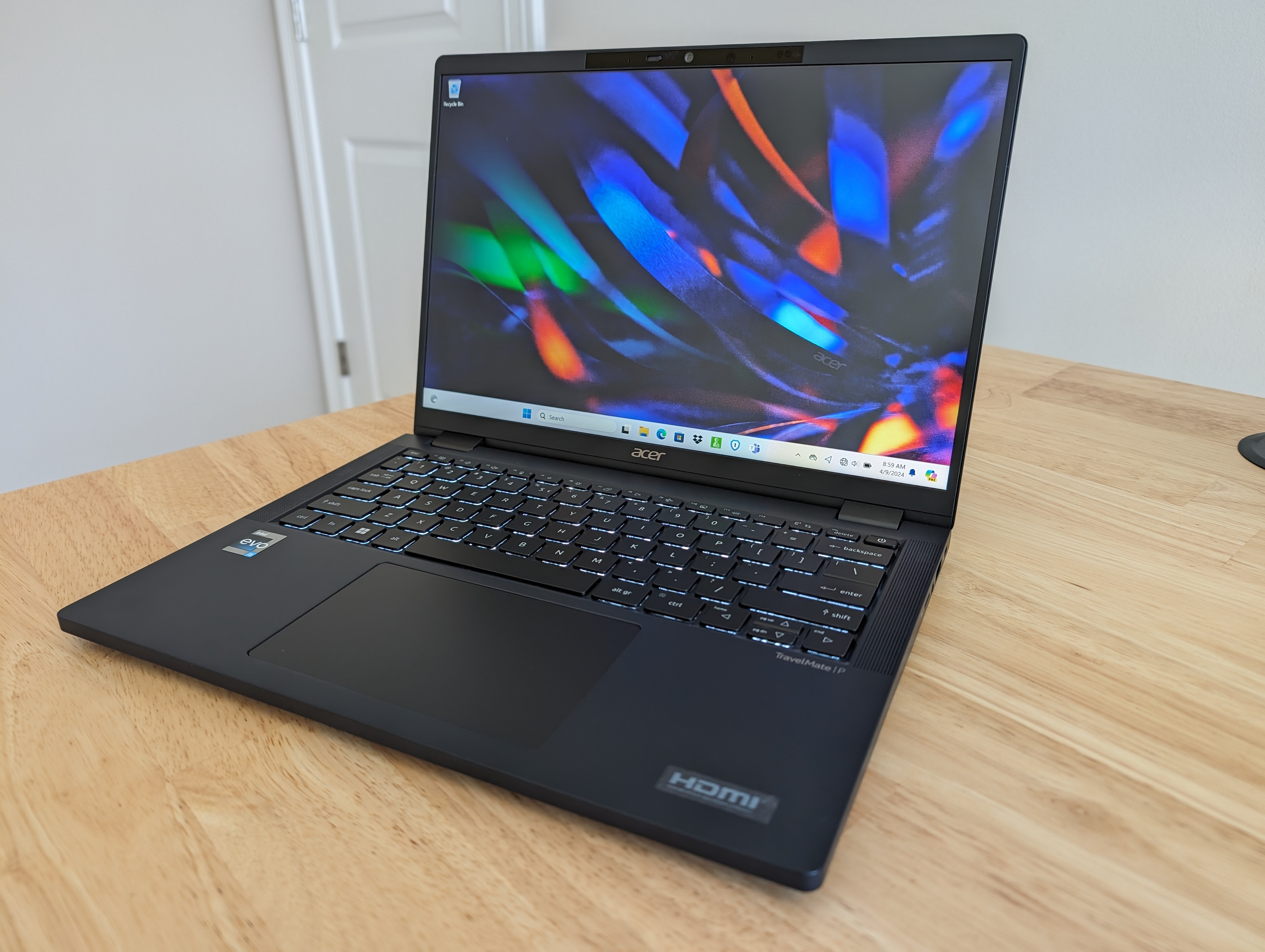
Pros
- Long battery life
- Light and portable
- A good price for a business laptop
Cons
- Keyboard is a tad mushy
- No NPU for future Windows AI features
- Consumer laptops deliver similar specs for a lower price
Why we like the Acer TravelMate P6
The Acer TravelMate P6 is featherlight at just 2.65 pounds. The chassis is made of magnesium-alloy, which is a very light yet durable material. According to our review, “the ports are reinforced with additional metal brackets to hold up wear and tear.” In other words, this machine is built to last. It also has fantastic battery life, which is what you want in an ultraportable laptop. The 65 watt-hour battery lasted nearly 13 hours on a single charge–more than a full workday! This laptop offers reliable performance, too. The Acer TravelMate P6 turned in a respectable Cinebench R20 score of 3,065, which isn’t far behind the more powerful HP Pavilion Plus.
Who should buy the Acer TravelMate P6
Anyone looking for an affordable, lightweight ultraportable. In addition to the lightweight form factor, it also comes with a 1080p webcam with a physical privacy shutter and a 14-inch 1200p display with a 16:10 aspect ratio. The taller screen makes it easier to scroll through documents or webpages, and the 1080p webcam will make you look good on videoconferencing calls. The keyboard provides a nice typing experience, too. It even boasts white backlighting, which is perfect for typing in low light environments.
Alternative option: If you’re interested in picking up a more high-end ultraportable, you should consider picking up the HP Dragonfly G4. It weighs same as the Acer TravelMate P6, but has much better battery life–it managed 17.5 hours on a single charge! The only downside is that it costs just over $3,000 thanks to its more potent components and support for mobile LTE connections. The Dell Latitude 7450 Ultralight is another great option, as it weighs 2.33 pounds, lighter than our top pick. But, similar to the HP Dragonfly G4, it’s just too expensive, costing north of $2,000.
Asus Zenbook 14 Flip OLED – Best 2-in-1
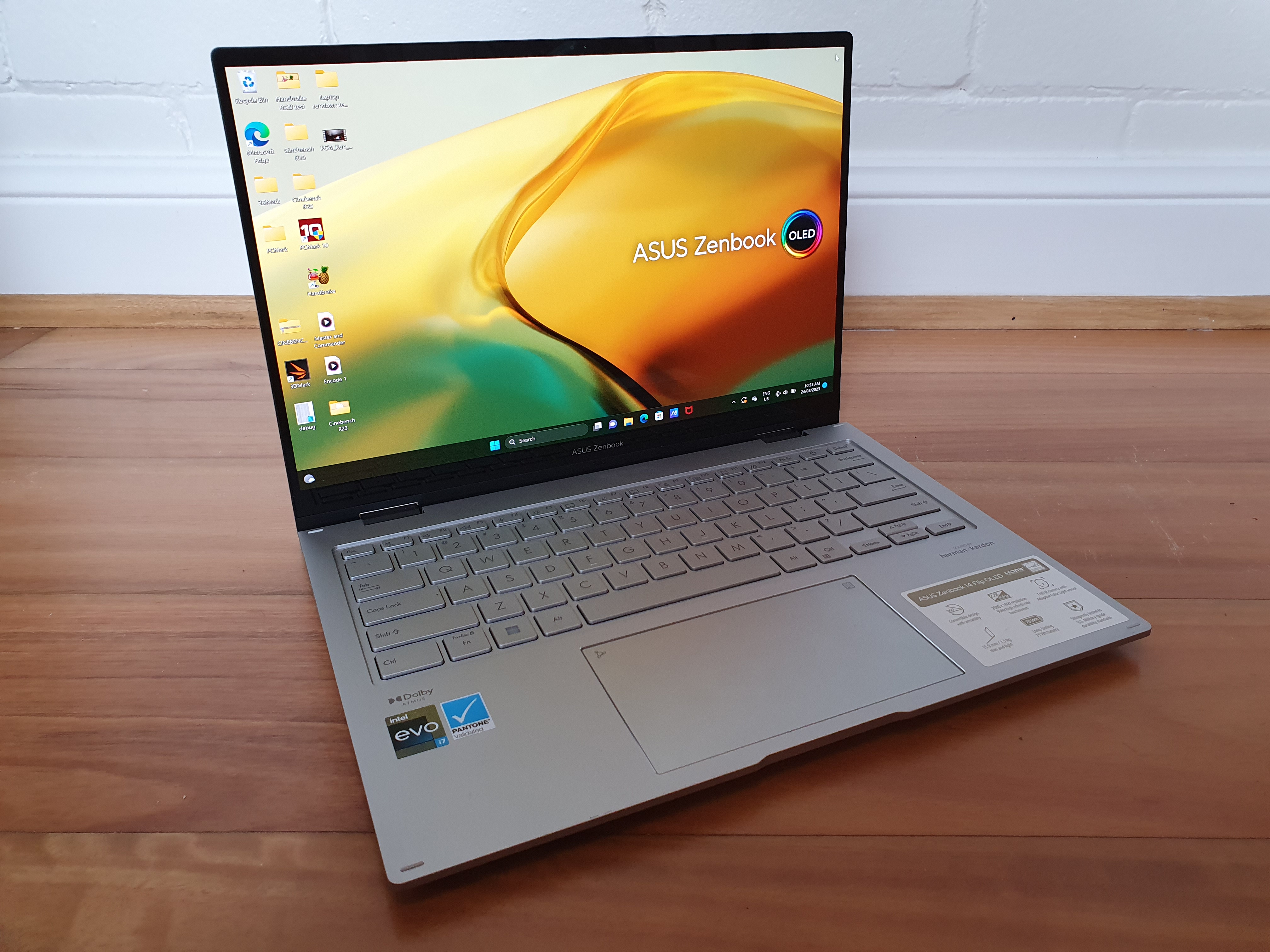
Pros
- Long battery life
- Connectivity includes two Thunderbolt 4 ports
- Fast performance
Cons
- Function keys are small
- The display is a little dim
Why we like the Asus Zenbook 14 Flip OLED
When it comes to 2-in-1 laptops, the Asus Zenbook 14 Flip OLED just gets it right at the start. It has a gorgeous OLED display, a zippy Intel Core i7-1360P CPU, and a versatile convertible design. You can flip the screen around 360 degrees and use it like a tablet or prop the device up like a tent if you so wish. Colors on the 1800p OLED display are also “remarkably bright and saturated,” according to our review. The battery died at the 12 hour mark, dominating laptops with similar hardware like the Lenovo Yoga Book 9i and the Acer Aspire Vero 14.
Who should buy the Asus Zenbook 14 Flip OLED
The Asus Zenbook 14 Flip is a good option for business professionals because of its convertible, lightweight design and stunning OLED display. You can take this machine with you anywhere and you don’t have to worry about finding an outlet to charge up. How can you go wrong with that?
Alternative option: If your budget knows no bounds, then you should consider picking up the Lenovo ThinkPad X1 2-in-1 ($2,761). It lasted a whopping 17 and a half hours on a single charge, which is absolutely bananas. Although it’s a long-lasting machine, our review unit lacked an OLED display and the high price tag may deter some folks.
Recent laptop reviews
- Dell Inspiron 16 Plus: The Dell Inspiron 16 Plus is a powerful 16-inch workstation with a nice combination of performance, battery life, and build quality. It’s a good alternative to gaming laptops for people who want more power than the average laptop offers.
- Surface Laptop 7: The Microsoft Surface Laptop’s strong processor performance and top-tier battery life prove that Windows’ transition to Arm has staying power, but even the most casual gamers should think twice.
- Acer Aspire 3: The Acer Aspire 3 cuts performance to the bone as it limbos below a $500 MSRP.
- Lenovo Yoga Pro 9i: The Lenovo Yoga Pro 9i is one of the best mainstream Windows laptops on the market, with great specs, a gorgeous display, and a killer keyboard.
How we test laptops
The PCWorld team puts each and every Windows laptop through a series of benchmarks that test GPU and CPU performance, battery life, and so on. The idea is to push the laptop to its limits and then compare it against others we’ve tested. Chromebooks, on the other hand, go through a series of web-based tests. It wouldn’t be fair or possible to run the same kinds of tests on a Chromebook, as they’re Chrome OS-based machines.
Below, you’ll find a breakdown of each test and the reasons why we run them. For a much deeper look at our review methodology, check out how PCWorld tests laptops.
Windows laptops
- PCMark 10: PCMark 10 is how we determine how well the laptop handles lighter tasks like web browsing, word processing, spreadsheets, and so on.
- HandBrake: HandBrake is more intensive than PCMark 10. It basically measures how long a laptop’s CPU takes to encode a beefy 30GB file.
- Cinebench: Cinebench is a brief stress test of the CPU cores. It does this by rendering a 2D scene over a short period of time.
- 3DMark: 3DMark checks if 3D performance remains consistent over time by running graphic-intensive clips.
- Video rundown test: To gauge battery life, we loop a 4K video using Windows 10’s Movies & TV app until the laptop dies.
Chromebooks
- CrXPRT 2: The CrXPRT 2 benchmark tests a Chromebook’s battery life.
- Speedometer 2.0: This test determines a Chromebook’s web browser performance. It simulates this by adding, completing, and removing a to-do list.
- Basemark Web 3.0: This benchmark gauges how well a Chromebook can handle web-based applications.
- Kraken 1.1: Kraken 1.1 is a JavaScript performance benchmark.
- Jetstream 2: Jetstream 2 is a combination of WebAssembly and JavaScript benchmarks. This is a way to gauge how well a Chromebook runs advanced workloads.
FAQ
What form factor is best for a laptop?
The first question you should ask yourself is what kind of laptop you’re looking for. There’s traditional clamshells, 2-in-1’s, Chromebooks, and much more. The displays on convertible laptops (aka 2-in-1’s), for example, can swing around 360 degrees. This allows you to use the laptop like a tablet. They can also be propped up like a tent for viewing movies or participating in video calls. Chromebooks, on the other hand, exclusively run Google’s web-focused Chrome OS and are generally used for everyday tasks. All you need is a Gmail account and boom, you’re in. There are pros and cons to each of them. Chromebooks are affordable and generally have good battery life whereas convertibles are normally lightweight and portable.
How much processing power do I need in a laptop?
If it’s CPU power you’re looking for, look for processors with higher numerical names. A Core i7 is more suited to gaming and more intense work than everyday tasks. Intel processors are available in Core i3, Core i5, Core i7, and Core i9. The higher the number, the more powerful the CPU. If you don’t need a ton of power, Intel Core i5 processors are your best bet, as they offer good performance at a decent price. Basic office and web work gets along just fine on a Core i3. As for AMD options, the Ryzen 3 is good for basic productivity and web browsing, while Ryzen 5 chips rival Intel’s Core i5 as solid all-arounders. If you need more power, the Ryzen 7 chip is well suited for content creation like video editing. Finally, if you’re dealing with 4K video, spring for a Ryzen 9.
Discrete graphics vs. integrated graphics?
You’ll want a discrete graphics card for hardcore gaming or editing videos. It’s separate from the processor, so you can expect higher performance out of it. Integrated graphics, on the other hand, are attached to the CPU and uses less power as a result. This is perfectly fine for everyday tasks, especially if you’re not doing anything that’s graphics-intensive.
How much memory do I need in a laptop?
8GB of RAM is zippy enough for general use. If you’ve got a gaming laptop, 16GB of RAM is the way to go, with 32GB being a future-proof configuration. Content creators will want as much as possible.
Do I need a big display on a laptop?
If you’re a video editor or someone who does a lot of multimedia work, you’ll want a display that’s anywhere from 15- to 17-inches. The sweet spot is really anywhere from 13- to 14-inches, though. The bigger the display, the heavier your laptop is going to be. A 13- or 14-inch display is the best in terms of portability and value.
How long should my laptop last on a single charge?
If you plan on taking your laptop anywhere with you, aim for something that can last 10 to 12 hours on a single charge. That’s more than a full work day, so it should theoretically get you through long flights or a day of classes. Obviously, more is always better. Just know that the bigger the battery, the heavier the laptop. Read our round-up of the best laptop chargers.
How much does a good laptop cost?
Many good laptops cost around $500 to $750, but the price really depends on your budget. If you’re strapped for cash (been there, trust me), go for a Chromebook or an entry-level business laptop. You can find solid options for under $500. Spending $750 to $1,000 can get you better displays, additional performance, more storage, and nicer designs. If you splurge for a laptop that costs over $1,000, you’re usually paying up for premium build quality, great extras, and top-shelf performance.
Gaming laptops are different. You can sometimes find gaming laptops with entry-level discrete graphics on sale for around $850, but you’ll usually need to spend at least $1,000 for a system with decent 1080p gaming chops. You can pay more — often much more — for better graphics firepower and nicer displays, but the costs can rise rapidly depending on your hardware of choice. Some fully loaded gaming laptops can go for multiple thousands of dollars but you’re getting the equivalent of a desktop replacement in return. Spending $1,200 to $2,000 usually gets you a very good gaming laptop.
Are connectivity options important on a laptop?
A wide array of ports is always a plus in my book, as it eliminates the need for an adapter. I’d recommend a laptop that has both USB-C and USB-A. An HDMI port is good, too. This is especially useful for when you want to hook up to an external monitor.

